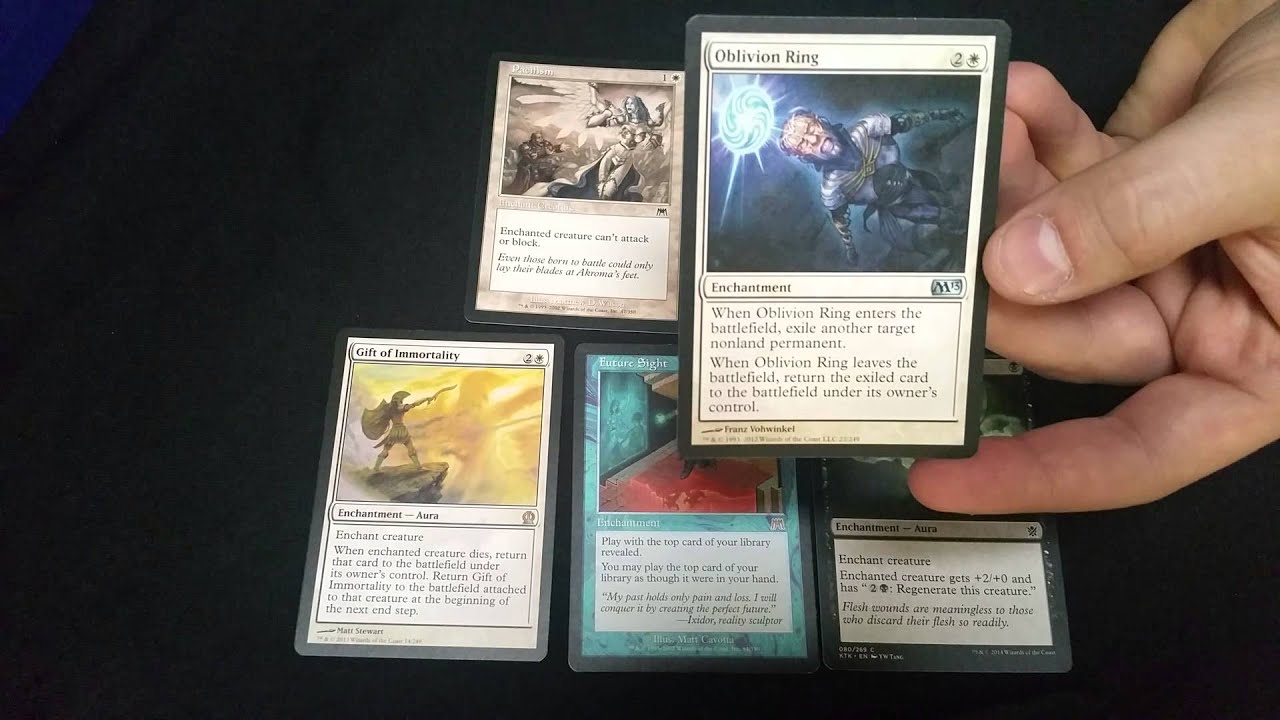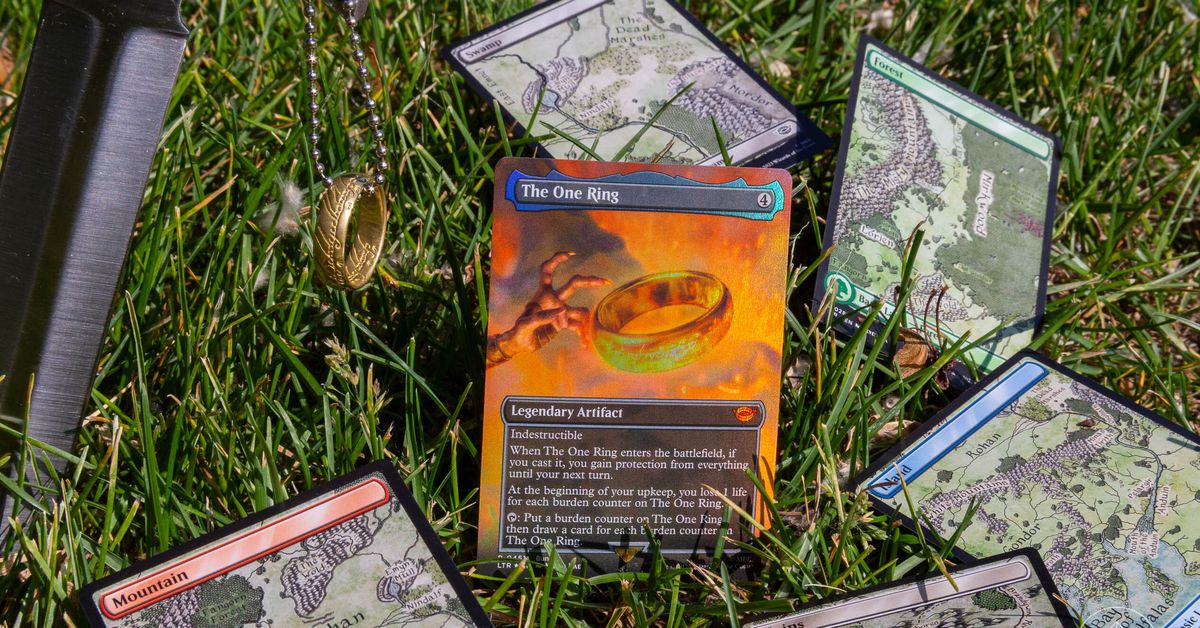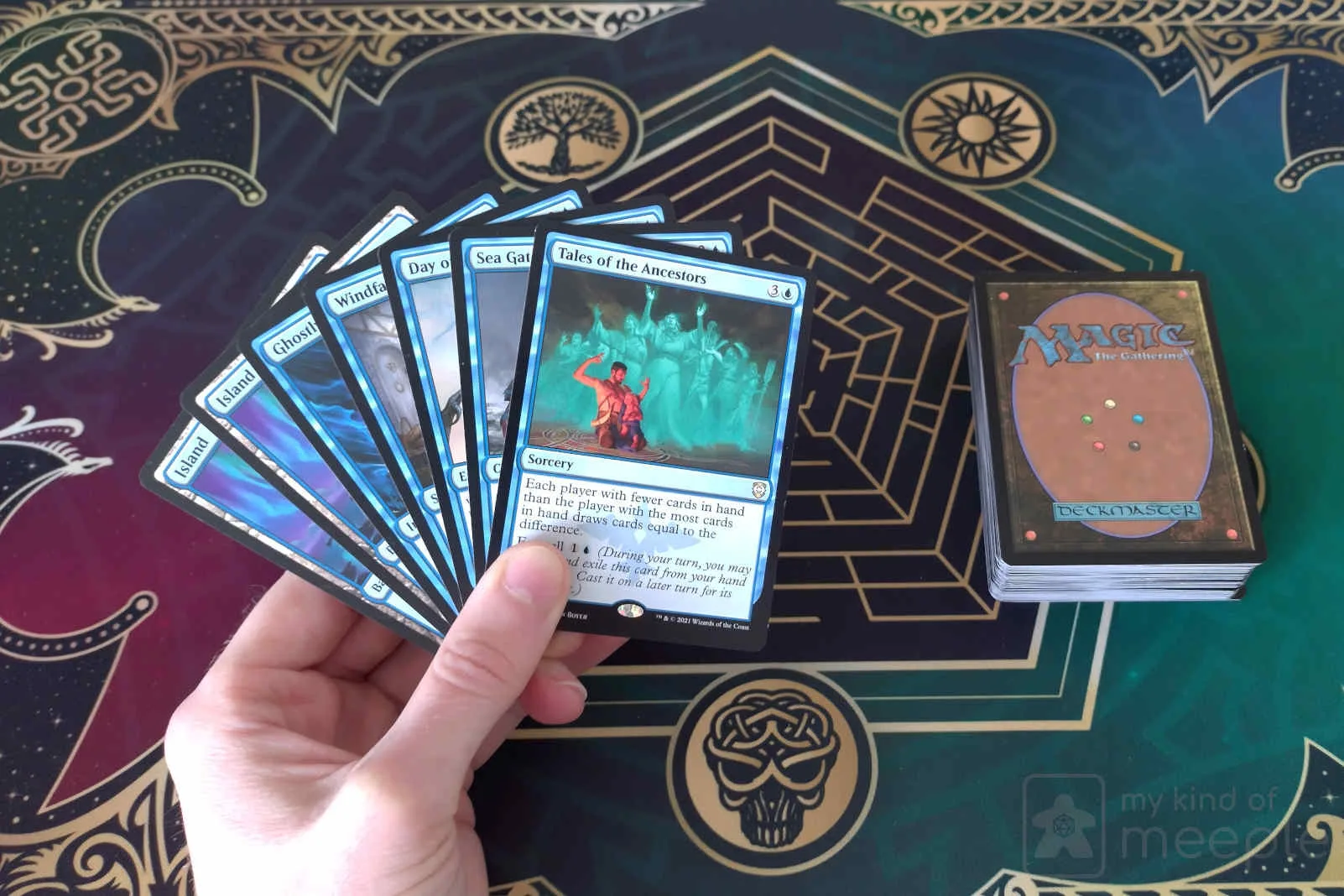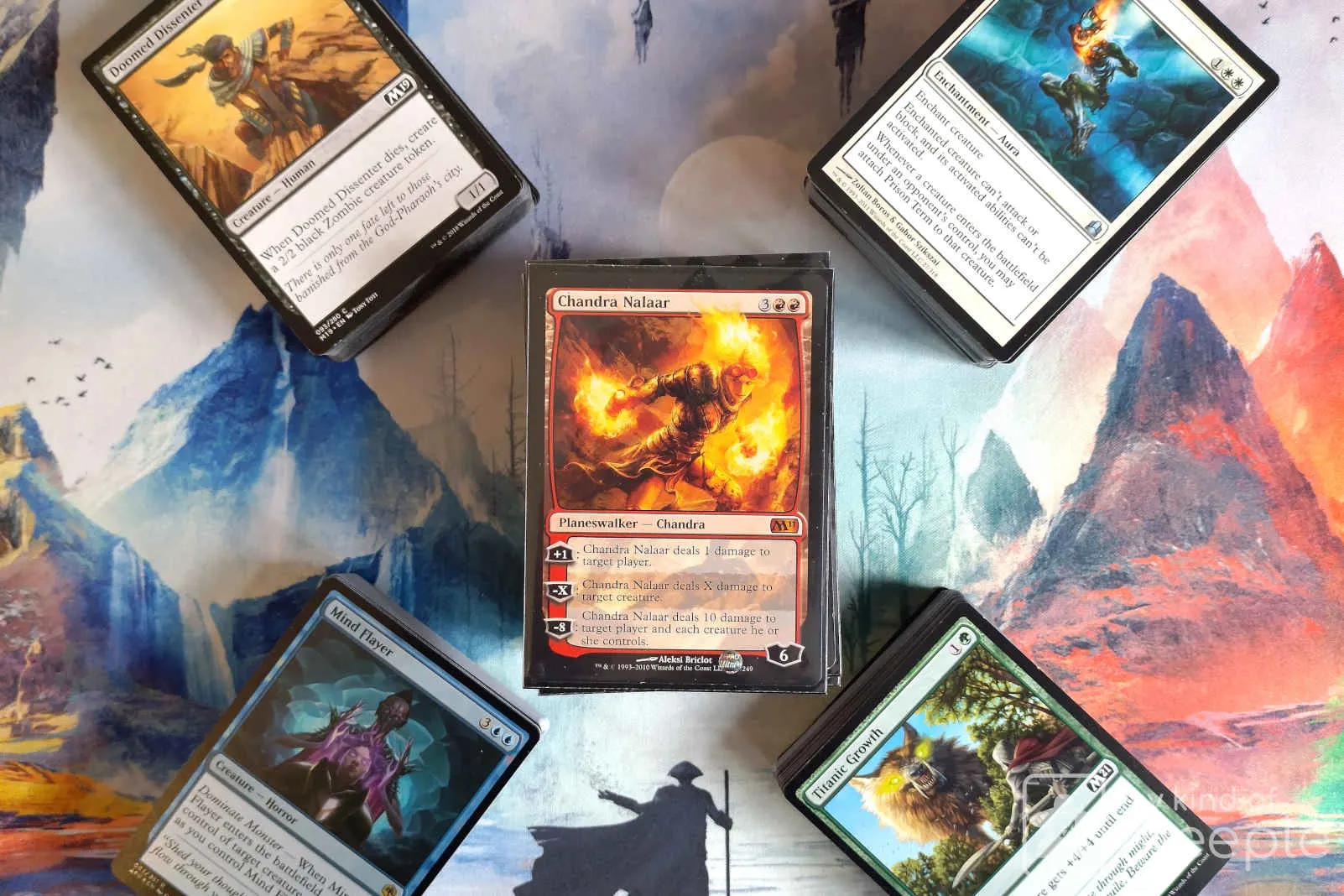Why Is MTG So Expensive Now?
However, one undeniable aspect of the game that has been garnering significant attention in recent times is its steep price tag. The question on everyone's mind is, "Why is MTG so expensive now?" This article delves into the factors driving the rising costs within the MTG market, exploring the interplay of demand, rarity, nostalgia, and market dynamics.
Author:Sonia RavenwoodReviewer:Aurora SmithSep 11, 2023227 Shares227K Views

The Gathering (MTG) has long captured the hearts of players and collectors alike with its intricate gameplay and captivating fantasy world. However, one undeniable aspect of the game that has been garnering significant attention in recent times is its steep price tag.
The question on everyone's mind is, "Why is MTG so expensive now?" This article delves into the factors driving the rising costs within the MTG market, exploring the interplay of demand, rarity, nostalgia, and market dynamics.
Why Are MTG Prices Going Up?
The phenomenon of rising MTG prices can also be analyzed from an economic perspective. Over time, inflation affects not only everyday goods and services but also luxury items and collectibles. The cost of producing MTG cards, including design, printing, distribution, and marketing, has also increased.
These costs are often passed on to consumers, contributing to the overall price escalation. Moreover, high-quality printing techniques and premium materials used in modern card production can drive up the cost of individual cards, influencing their market price.
Growing Competitive Scene
The competitive aspect of MTG has gained significant traction, with players participating in tournaments and leagues worldwide. As the competitive scene grows, players are willing to invest in powerful and strategically crucial cards to gain an edge in these tournaments.
This growing demand for tournament-playable cards amplifies their market value. Additionally, as players seek to build optimal decks to excel in competitive environments, certain cards become essential components, thereby driving up prices due to their increased demand.
Digital Platforms And Online Gameplay
The digital transformation has also played a role in driving up MTG prices. With the advent of online platforms that allow players to engage in virtual MTG gameplay, the demand for physical cards has paradoxically increased.
platforms create exposure to the game for a broader audience, including players who may not have been initially interested in physical cards. This expanded player base can contribute to increased demand for tangible cards, thereby influencing their prices.
Why Is Modern MTG So Expensive?
Due to the limited supply of cards and the game's established rotation, MagicThe Gathering is often seen as pricey. Standard rotation forces players to purchase new decks every year in order to play competitively, while card scarcity causes older cards to cost more owing to strong demand.
Magic There is a "standard rotation" in The Gathering's Standard format. When certain new sets are released, older sets no longer qualify for tournament play under the standard rotation schedule.
It may be a bit difficult to keep track of which new sets render certain cards ineligible for play in professional tournaments since Wizards of the Coast, the game's publisher, often releases new sets. Just be aware that typical rotation only occurs once a year at the moment.
This means that each player must constantly purchase and construct new competitive decks in order to continue enjoying MTG's standard format when rotation occurs.
The average cost of a Standard deck is $247; at first glance, this seems to be less expensive than the $865 average cost of a Modern deck, but you must keep in mind that Modern's pricing is non-recursive. Most of the time, you just have to pay it once.
However, you'll see that it may quickly spiral out of control if your Magic: The Gathering pastime is focused on building competitive standard decks.
It's simple to think that you must play standard for 4 years ($2474) before the cost of playing exceeds the cost of a contemporary deck ($865), but it's not quite that straightforward.
Standard decks don't hold their value as well as Modern decks do, and if you choose to sell the cards after rotation, you won't likely earn more than 25% of what you bought for them.
Although this isn't always the case, it's safer to assume that money spent on Magic The Gathering's standard format as a pastime is just gone and cannot be recovered.
The typical Magic The Gathering player spends over $1000 on MTG as a hobby each year, in large part due to this recurring expense, especially if they elect to build two or even three standard decks since, after all, variety is the spice of life.
It's crucial to evaluate your financial capabilities while thinking about Magic The Gathering as a new pastime. Your level of involvement in this Trading Card Game will determine how pricey Magic The Gathering is as a pastime.
Are MTG Cards Going Up In Price?
The global economy is not immune to disruptions, and the MTG market has experienced its share of supply chain challenges. From printing delays to distribution issues, these disruptions can lead to temporary shortages of specific card sets.
As a result, the scarcity of these cards can drive up their prices, especially when demand remains constant. Players and collectors are often willing to pay a premium to acquire cards that are currently difficult to find due to supply chain hiccups.
Secondary Market Dynamics And Price Influencers
The secondary market for MTG cards plays a crucial role in determining prices. Factors such as player demand, collector interest, and the influence of content creators and streamers can impact card values.
Cards that see frequent use in competitive play or are highlighted by popular figures can experience rapid price appreciation. Conversely, when certain cards fall out of favor or new strategies emerge, their prices might decrease. This fluidity in price reflects the ever-changing landscape of the MTG secondary market.
Format Trends And Card Viability
Different formats within MTG, such as Standard, Modern, Pioneer, and Commander, each have their own card pool and metagame. Card prices can be heavily influenced by the format's popularity and the performance of specific cards within it.
Cards that become staples in competitive formats often experience sustained price increases as players actively seek them out for their decks. Conversely, shifts in format preferences can lead to price declines for cards that were once in high demand.
Wizards Of The Coast's Product Strategy
The strategic decisions made by Wizards of the Coast (WotC), the company behind MTG, can significantly impact card prices. WotC's choice of reprints, special edition sets, and product releases can create waves in the secondary market.
Reprints of valuable cards in new sets can help stabilize prices, while the introduction of sought-after cards in limited-run products can drive prices higher due to their scarcity. Players and collectors closely follow WotC's product announcements for potential impacts on card values.
Why Are MTG Cards Losing Value?
Due to overproduction, The Gathering Cards' value is declining. Overproduction of Magic - The Gathering Cards by Hasbro lowers stock market values and lowers the value of the game's most valuable trade cards.
The value increases as demand rises. Once they start to be used in competitive decks, cards that may have been useless a few weeks before may wind up being rather valuable. Additionally, competitive Magic is mostly a pay-to-play game.
Is Magic: The Gathering In Decline?
The recent 5.2% drop in Hasbro's stock price is directly related to the firm overprinting cards for the immensely popular game. Jason Haas, an analyst at Bank of America, claims that although the company's approach produces short-term profits, it has the long-term effect of lowering Magic's total worth.
As Haas noted, "The primary concern is that Hasbro has been overproducing Magic cards, which has propped up Hasbro's recent results but is destroying the long-term value of the brand," Haas was referring to Magic's recent 30th-anniversary set, which contains special reprints of valuable, now out-of-print cards.
How Did Hasbro Ruin Magic?
The question of whether Hasbro has "ruined" Magic: The Gathering is a complex and subjective matter. While some players and fans hold the belief that certain decisions made by Hasbro have had negative impacts on the game, it's important to note that others may have different perspectives.
The relationship between a parent company and a subsidiary like Wizards of the Coast is multifaceted, and any critique should be considered within a broader context. Here are some common concerns raised by critics.
Profit-Driven Decisions
Critics argue that Hasbro's ownership of Wizards of the Coast has led to decisions driven primarily by financial considerations. This includes the introduction of products like collector boosters and secret lairs, which some players perceive as catering to collectors and high spenders while potentially leaving other players behind.
Power Creep
Some players feel that new card releases have introduced power creep, making older cards obsolete and pushing players to acquire new, often more expensive, cards to stay competitive. This can disrupt the balance and diversity of the game and create an environment where players are compelled to keep purchasing to keep up.
Monetization Strategies
Critics point to the introduction of exclusive and high-priced products as a way for Hasbro to maximize profits. The perception that the company is prioritizing revenue generation over player experience can lead to frustration among players who feel excluded due to pricing.
Communication And Transparency
There have been instances where players feel that communication from Hasbro/Wizards of the Coast has been lacking. Changes made to the game without clear explanations or the absence of effective responses to community feedback can create a sense of detachment between the company and its player base.
Shift In Design Philosophy
Changes in design philosophy have led to mixed reactions among players. Some view certain mechanics and design choices as straying from the traditional complexity and depth of Magic, possibly making the game less appealing to long-time players who appreciate these aspects.
Are Magic Cards A Good Investment?
It cannot be denied. Over the years, Magic The Gathering has developed a sizable fan base, and new players join the game every day. So, it seems sensible to ask: Are MTG cards a wise investment?
Cards from Magic: The Gathering are an excellent investment. You still play this 30-year-old game with limited edition cards, nostalgia, and a sizable fanbase in more than 70 nations. Those rare cards will increase in rarity over time, and your collection will increase significantly.
Do MTG Cards Increase In Value?
The Alpha Black Lotus card as an example if you believe that Magic: The Gathering cards are worthless. When it was first released in 1993, this uncommon card was highly prized by collectors. Its value increased to $18,000by 2018 and now, a near-mint Lotus is valued between $80,000 and $100,000!
Do MTG Cards Hold Value?
Cards from Magic - The Gathering are valuable. This is due to the limited edition cards that the designers have, of which a certain number are created and distributed. Over time, the rarest cards always get eaten by dogs or wet, increasing the value of the remaining cards.
Additionally, since Magic the Gathering is played all around the globe, those who play it now will have fantastic memories of it in 20 or 30 years, which will drive up the price of already-rare memorabilia.
Which MTG Cards To Invest In?
Which MTG cards should one buy as a result, one wonders? We offer a few suggestions for the cards we believe will be the most in-demand in the next years. Although there are several rare cards, we have narrowed down our selection to the ones below.
Should I Invest In MTG Cards?
Purchasing card games is virtually never a wise decision. Since most cards might be reprinted at any time and could possibly see a significant loss in value as a result, card values are very unpredictable and subject to the whims of whoever holds the I.P.
Additionally, the price of a card could decrease significantly if a superior version is released.
Finally, you mention spending money on a rather little piece of cardboard. Cards may be destroyed, misplaced, or stolen extremely simply. Try investing in something that won't be as easy to break or whose price will be more stable.
How Long Do MTG Cards Last?
The Gathering cards are made from various materials, and their lifespan can vary depending on factors such as storage conditions, usage frequency, and handling practices. Generally, MTG cards are designed to be durable and withstand regular gameplay, but their longevity can still be influenced by several factors.
- Card Material- MTG cards are typically made from a combination of cardboard stock and a glossy finish. The cardboard stock is durable, but it can still wear down over time with use. The glossy finish provides some protection against spills and minor wear.
- Handling- Frequent shuffling, handling, and gameplay can cause cards to show signs of wear more quickly. Cards that are used in decks for competitive play, where shuffling and drawing occur frequently, may show more wear than cards that are part of a collection and rarely handled.
- Sleeves - Many players choose to use card sleeves to protect their MTG cards from wear and tear. Sleeves can extend the lifespan of cards significantly by preventing direct contact with hands, shuffling, and other sources of potential damage. Sleeves come in various materials, qualities, and designs.
- Storage Conditions - The way cards are stored also impacts their longevity. Cards stored in a cool, dry place away from direct sunlight and humidity are less likely to deteriorate. Proper storage can prevent fading, warping, and other forms of damage.
- Exposure to Light- Prolonged exposure to direct sunlight can cause the colors on the cards to fade over time. It's best to store cards in a location where they won't be exposed to excessive light.
- Humidity and Moisture- High humidity or exposure to moisture can cause cards to warp or become damaged. Keeping cards in a controlled environment with stable humidity levels is important for their preservation.
- Play Area - Where you play the game matters. Playing on clean surfaces and using playmats can help protect cards from dirt, spills, and other potential hazards.
- Age of the Cards- Older cards may be more susceptible to wear and damage due to their age. Cards from earlier sets may not have the same quality as newer releases, and cards that have seen extensive play over the years may show more wear.
- Special Cards- Foil cards, which have a shiny, reflective surface, are more prone to showing wear and scratches due to their unique finish. Additionally, some special or alternative-art cards may have unique finishes that are more delicate.

Magic: The Gathering Is About To Get A Lot More Expensive
Why Did MTG Get Rid Of MSRP?
You're making this modification in order to simplify our product-related communications. The fact that MSRPs are not widely accepted caused some misunderstanding among our international player base. It becomes less and less logical to provide a retail price as Magic gets more and more international.
Manufacturer's recommended retail prices, or MSRPs, for Magic items will no longer be provided by Wizards of the Coast beginning with War of the Spark.
This modification is being made to simplify your product-related communications. The fact that MSRPs are not widely accepted caused some misunderstanding among our international player base. It becomes less and less logical to provide a retail price as Magic gets more and more international.
Do not be alarmed; there will be no significant impact on our business or goods. We think that by doing away with MSRP, we will simply be able to interact with our gamers and the stores where they purchase more effectively.
What Is The Most Expensive MTG Ever?
The Gathering card ever sold was the Black Lotus card from the Alpha set. The Alpha set was the first printed set of MTG cards and was released in 1993. The Black Lotus card is one of the famous "Power Nine" cards, a group of exceptionally powerful and sought-after cards from the early days of the game.
The price of a Black Lotus card can vary significantly based on factors such as condition, rarity, and market demand. The Alpha version of the Black Lotus card, in mint or near-mint condition, has been known to sell for tens of thousands of dollars, and in some cases, even more.
It's worth noting that the value of rare Magic cards can change over time due to fluctuations in the market and shifts in collector demand. Additionally, new sets and reprints can influence the perceived rarity and value of older cards.
To get the most up-to-date information on the current most expensive Magic: The Gathering card, I recommend checking specialized card trading platforms, auction sites, or other reliable sources that track card values in real-time.
People Also Ask
Why Are Certain MTG Cards Reaching Astronomical Prices?
The scarcity of iconic and powerful cards, coupled with increased demand from players and collectors, has driven their prices to new heights.
How Has The Concept Of Card Rarity Contributed To MTG's High Prices?
The rarity system, featuring cards with unique artwork and mechanics, creates an inherent value hierarchy that influences market demand and pricing.
What Role Does Nostalgia Play In The Rising Costs Of MTG Cards?
Nostalgia fuels the desire among players and collectors to own cards from their youth, causing prices to surge for older, sentimentally valuable cards.
Why Are Competitive Formats In MTG Influencing Card Prices?
The demand for cards that dominate competitive formats leads to price escalation, as players strive to build effective decks for tournament play.
How Does The Global Market Impact The Expensive Nature Of MTG Cards?
The accessibility of cards worldwide intensifies competition, driving up demand and contributing to higher prices in the global secondary market.
Conclusion
The soaring prices within the Magic: The Gathering (MTG) market can be attributed to a myriad of interlocking factors. The convergence of unprecedented demand, limited supply, investment interest, nostalgia, evolving game dynamics, and the influence of the global market has led to the current landscape where MTG is undeniably expensive.
Collectors and players are drawn to the allure of owning iconic cards, driven by emotional attachments, competitive aspirations, and the game's global reach. The intricate dance between these economic, emotional, and social elements continues to shape the question at the heart of the matter: "Why is MTG so expensive now?"
Jump to
Why Are MTG Prices Going Up?
Why Is Modern MTG So Expensive?
Are MTG Cards Going Up In Price?
Why Are MTG Cards Losing Value?
Is Magic: The Gathering In Decline?
How Did Hasbro Ruin Magic?
Are Magic Cards A Good Investment?
Should I Invest In MTG Cards?
How Long Do MTG Cards Last?
Why Did MTG Get Rid Of MSRP?
What Is The Most Expensive MTG Ever?
People Also Ask
Conclusion

Sonia Ravenwood
Author
Sonia Ravenwood is an accomplished writer with a profound passion for exploring spirituality, magical practices, and the significance of numbers.
She has published numerous works exploring spiritual growth, magical practices, and the significance of numbers on reputable platforms.
Her insightful content reflects her expertise and dedication, making complex concepts accessible and engaging for readers.
Prior to focusing on writing, Sonia held various roles in content creation and marketing, honing her skills in communication and storytelling.

Aurora Smith
Reviewer
Aurora Smith is an expert with over 8 years in psychics, with a passion for tarot reading.
She holds a Bachelor of Arts in Anthropology from Stanford University, bringing a strong academic foundation to her work in exploring mystical phenomena.
With her expertise in psychics, Aurora delves into tarot readings and magical practices, providing insightful content that engages and enlightens readers.
Her writing style is characterized by clarity and engagement, making complex concepts accessible and intriguing for readers.
Outside of her writing pursuits, Aurora enjoys delving into the mysteries of the supernatural world and practicing tarot readings.
Latest Articles
Popular Articles


